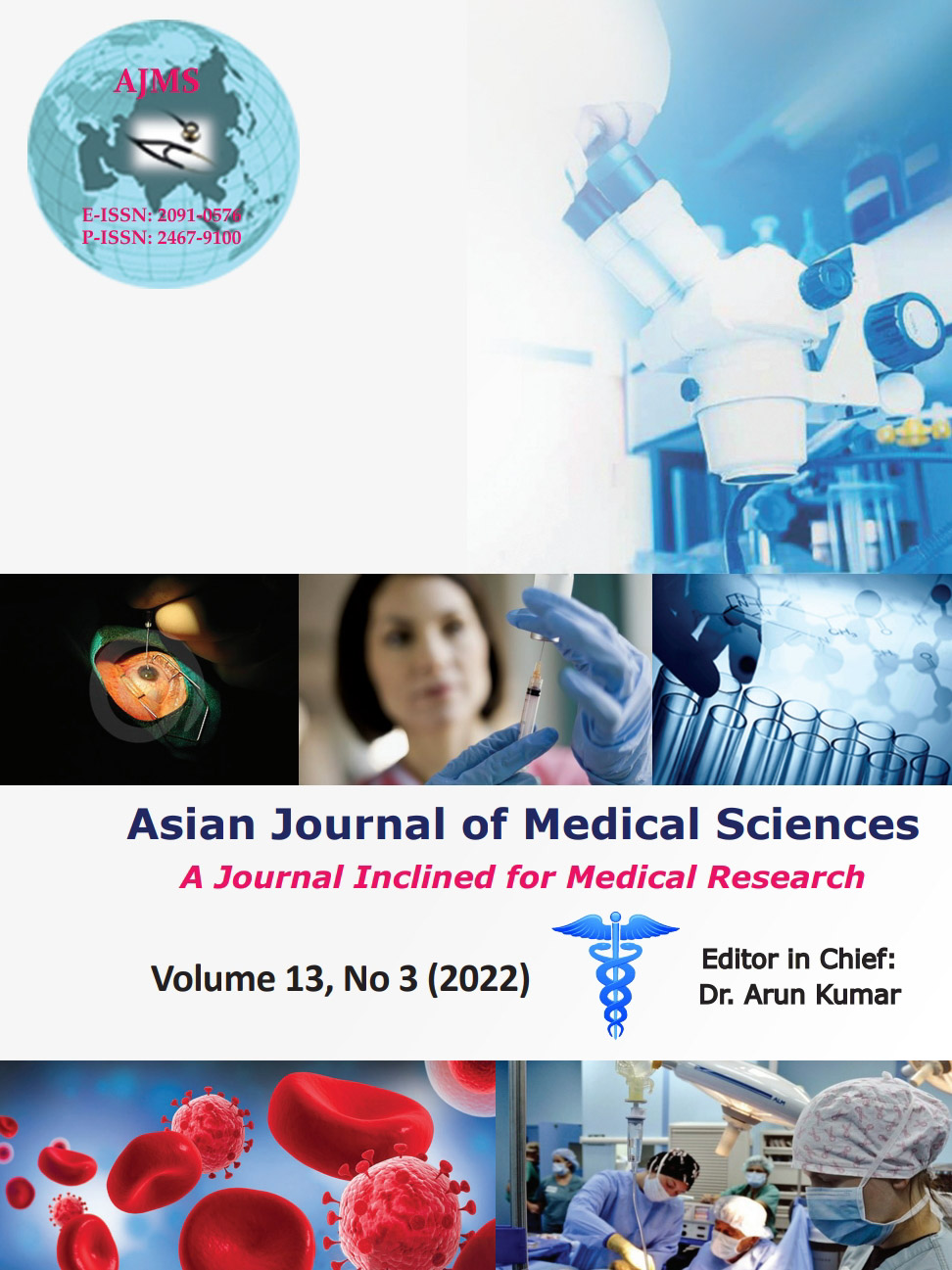Fetomaternal outcome in patients with threatened abortion in the first trimester – An observational study
Keywords:
Fetomaternal outcome, First trimester bleeding, Threatened abortionAbstract
Background: Uterine bleeding in early pregnancy represents a definite threat to developing embryo and is directly proportional to the amount of bleeding. It is associated with an increased risk of poor obstetric and neonatal outcomes such as preterm labor, low birth weight, and premature rupture of membranes (PROM).
Aims and Objectives: This study aims to investigate the effect of the first trimester vaginal bleeding on maternal and perinatal outcomes.
Materials and Methods: This prospective observational study carried out in a tertiary teaching hospital of Kolkata, between January 2019 and June 2020. Here,190 patients with the first trimester vaginal bleeding were included in the study. Outcome of pregnancy was assessed in the form of obstetrical complications such as placenta previa, PROM, preterm labor, intrauterine fetal death, intrauterine growth retardation (IUGR), and neonatal outcomes such as prematurity, low birth weight, low appearance, pulse, grimace, activity, and respiration, requirement of newborn intensive care unit (NICU) admission, and perinatal death.
Results: Our study shows that 116 (61.05%) out of 190 were primi gravida and rest 74 (38.95%) were multigravida. Seventy-five (39.47%) had missed abortion, 43 (22.63%) patients had incomplete abortion, and 23(12.10%) out of 190 patients resulted in complete abortion. About 19.47% (37 out of 190) had viable pregnancy. Six(16.21%)out of 37patients had preterm delivery, 4(10.81%)out of 37 patients had antepartum hemorrhage. Preeclampsia developed in 8.1% (three out of 37) patients. About 48.64% (18) delivered vaginally, 45.94% (17) underwent lower segment cesarean section, and only 2(5.40%) patients had instrumental delivery(forceps). Regarding neonatal outcome, 5.40% had early neonatal death, 21.62% needed NICU admission, 8.10% suffered from fetal distress, 5.40% had meconium stained liquor, 8.10% were IUGR, and 32.43%had birth weight <1.5 kg.
Conclusion: The first trimester bleeding is a predicting factor for obstetric and perinatal complications during pregnancy.
Downloads
Downloads
Published
How to Cite
Issue
Section
License
Copyright (c) 2022 Asian Journal of Medical Sciences

This work is licensed under a Creative Commons Attribution-NonCommercial 4.0 International License.
Authors who publish with this journal agree to the following terms:
- The journal holds copyright and publishes the work under a Creative Commons CC-BY-NC license that permits use, distribution and reprduction in any medium, provided the original work is properly cited and is not used for commercial purposes. The journal should be recognised as the original publisher of this work.
- Authors are able to enter into separate, additional contractual arrangements for the non-exclusive distribution of the journal's published version of the work (e.g., post it to an institutional repository or publish it in a book), with an acknowledgement of its initial publication in this journal.
- Authors are permitted and encouraged to post their work online (e.g., in institutional repositories or on their website) prior to and during the submission process, as it can lead to productive exchanges, as well as earlier and greater citation of published work (See The Effect of Open Access).




